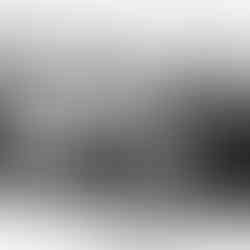WWII Japanese army Nikko (Nikon) optics
- Admin

- Jan 26, 2018
- 3 min read


Main pic: Japanese Officers observing the Nomonhan Front, 1939 Prior to 1917, the Japanese military had largely relied on imported binoculars, scopes, and other optical products from Germany and the incorporation of Nippon Kogaku was intended to bring an end to Japanese reliance on German optical products. The founding of Nippon Kogaku in 1917 came at the perfect time, as World War I had just broke out, and Japan lost it’s ability to get imported goods from Europe. On July 25, 1917, two optical industries, Tokyo Keiki Seisaku Sho (Tokyo ,Measuring Works - est 1896) and Iwaki Glass Manufacturers (set 1883) merged to form Nippon Kogaku Kogyo Kabushiki Kaisha, abbreviated to Nippon Kogaku KK the forerunner of the company we know of today as Nikon. Nippon Kogaku (Nikon) started out as an optical firm and not a camera manufacturer, therefore, their beginnings parallel those of Leitz and Zeiss, who also began as optical manufacturers.
Nippon Kogaku KK was set up primarily to serve the Japanese Armed Forces. They began with some 200 employees and seven German technicians who were invited in July of 1919 and arrived in January of 1921. The Germans were, Heinrich Acht (leader of the delegation), Ernst Bernick, Hermann Dillman, Karl Wise, Albert Ruppert, Max Lange and Otto Stage that arrived on a 5-year contract. With this German expertise, they began to produce a vast array of optical products such as microscopes, telescopes, transits, surveying equipment and optical measuring devices for industry and science. Because of the types of products they made they became well known in the scientific and industrial communities but not to the general consumer.

From left to right, these four logos were used by Nippon Kogaku on their products in 1927, 1930, 1932, and 1950.
During their stay in Japan, the eight German engineers helped expand Nippon Kogaku’s product portfolio to include telescopes, binoculars, and aerial photographic lenses. Their first photographic lens was a direct copy of the 4-element Zeiss Tessar lens called the Anytar. The Anytar’s design was overseen almost exclusively by Heinrich Acht during his stay in Japan. After his departure, the Anytar continued to be refined, until eventually reaching or even exceeding the quality of the Tessar it was based off. The Anytar lens was only made in pre-production form and never sold to the public. The only known copies are in the Nikon Museum in Japan.

Left: Type 93 Artillery rangefinder scope primarily designed for use by anti-aircraft batteries
This German collaboration continued after the Axis Tripartite Pact was signed in 1940, Carl Zeiss made available nearly all their patents for free to the Japanese. This also explains why German and Japanese military optics looked similar. Artillery periscopes like the Leitz and Carl Zeiss Scherenfernrohr had their identical counterpart in the Nikko "rabbit ear" periscopes.

Nikko 8x6 Trench Periscope
By the 30s they were producing a series of photographic lenses from 50mm to 700mm, mostly for plate back cameras, and the word 'Nikkor' was first used, having derived it from 'Nikko' which was used on their early microscopes. By July and August of 1937 they had completed the design of 50mm f4.5, 3.5 and 2.0 Nikkors which came as original equipment on the famous Hansa Canon of the same year. Nippon Kogaku actually produced all of Canon's lenses up to mid-1947; therefore all prewar and early postwar Canons came with Nikkor lenses. Of course the first were in Canon's own bayonet mount, but later ones were equipped with the Leica thread mount.

Note in background : Nikko Nikon 15X80 60 Degree Inclined Oculars





































































Comments